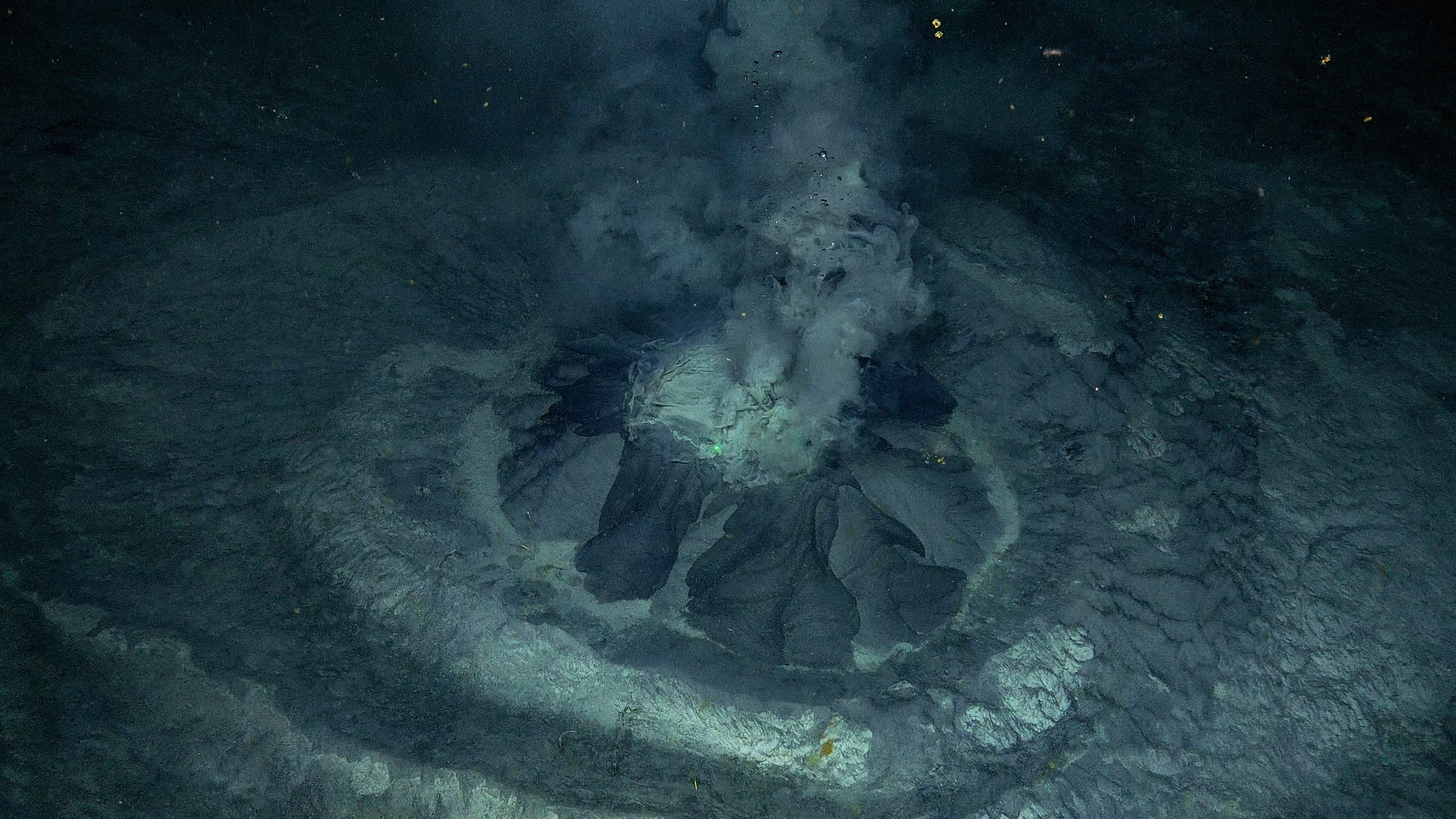In the final days of the oceanographic expedition AKMA3, the team of researchers aboard the ship ‘Kronprins Haakon’ discovered a mud volcano in a crater approximately 300 meters in diameter at the bottom of the Barents Sea (Norway). Such mud volcanoes are rare in this Arctic region, with only one other known, the ‘Håkon Mosby’, discovered in 1995.
Aboard this oceanographic expedition, which concluded on May 10, was an international and multidisciplinary team of scientists led by researchers from the Arctic University of Norway in partnership with REV Ocean. As this expedition took place within the framework of the AKMA project – ‘Advancing Knowledge of Methane in the Arctic’, the team on board included representatives from various project partners, including the University of Aveiro, represented by researcher Sofia Ramalho (CESAM/DBIO), who was also the only Portuguese onboard.
Professor Giuliana Panieri, the expedition leader, along with Stefan Buenz, and AKMA project coordinator, stated in a press release from the Arctic University of Norway, “We do not exclude the possibility of discovering other mud volcanoes in the Barents Sea. However, it is only through collaborative work and advanced technologies that these results can be achieved. Witnessing this underwater mud volcano erupting live reminds me of how alive our planet is.”
According to the same press release, mud volcanoes are peculiar structures that predominantly emit “water and sediment from hundreds of meters to several kilometers deep in the ocean crust, providing a window into the Earth’s interior and past environments.” This volcano continuously releases methane-rich fluids and sits within a crater formed by one or multiple explosions that occurred after the glacial period 18,000 years ago.
As mentioned by researcher Sofia Ramalho (CESAM/DBIO) to CESAM Communication from Norway, “There is still much to discover about the ecology of these Arctic habitats, especially considering the potential cumulative impacts of human activities in this region along with the observed climate changes.” Her work is specifically linked to the biodiversity of communities associated with cold seeps in the Arctic (in which these types of volcanoes are included).
Various locations were sampled during this expedition, but according to Sofia Ramalho, “we were not specifically looking for this volcano, but rather for cold seeps that can take many forms in geological terms.” Cold seeps are habitats that harbor a high biomass of specialized organisms dependent on various forms of primary production resulting from chemosynthesis. “Benefitting from high local productivity, the space adjacent to this volcano, unlike what is often found in other investigated Arctic areas, also hosts a high diversity and density of animals, such as sponges, corals, and fish.” In the newly discovered location, the Portuguese researcher collected sediment samples from this crater to study meiofauna, “or rather, nematodes, which are small microscopic marine worms and despite being poorly studied, are among the most abundant and diverse animals found in marine sediments. In addition, samples of macrofauna (e.g., crustaceans, polychaetes) and megafauna (e.g., sponges, starfish) were also collected for the study of the trophic chain in these areas.”
In addition to all the scientific work produced, the researchers on board also engaged in scientific outreach activities with Portuguese schools. As Sofia Ramalho notes, “we were connected to Portuguese schools for almost the entire cruise, a school from Azurva, a school from my hometown in Mora, and another school from Loulé (…) that had video calls and saw the REV Ocean ROV Aurora [Remotely Operated Vehicle] in action on the seabed live.”
Image credits: UiT/AKMA3
Text by: CESAM with collaboration from Sofia Ramalho (CESAM/DBIO)
